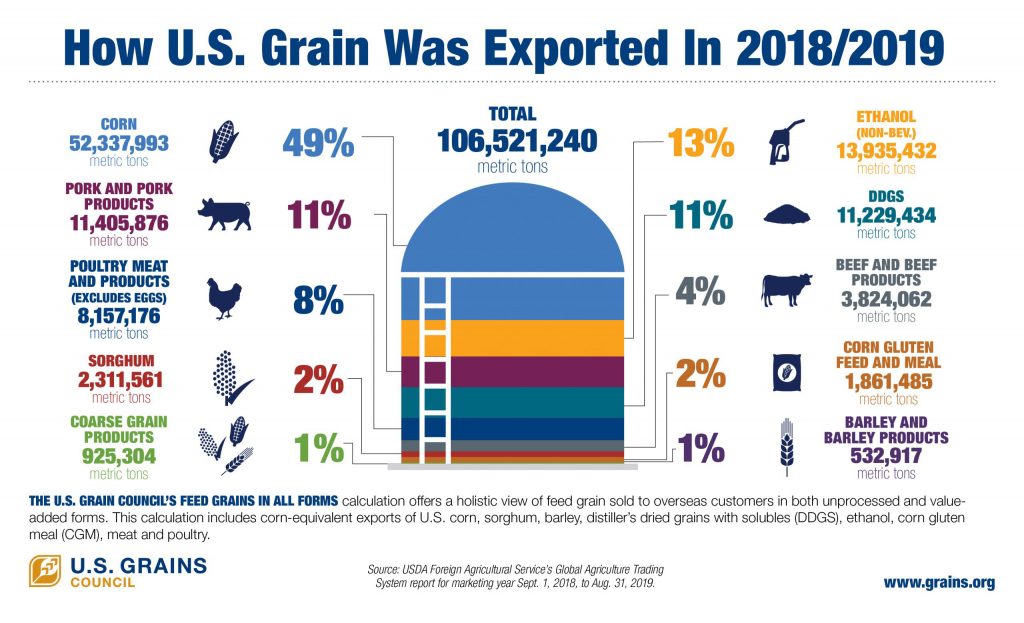As international economies shift and global markets develop, the U.S. Grains Council (USGC) helps U.S. farmers and agribusinesses track how much of total U.S. feed grain production is used in the world market.
The Council follows the export markets for U.S. corn, sorghum, barley, ethanol, distiller’s dried grains with solubles (DDGS), corn gluten feed/meal and other coarse grain products. In addition, the Council’s feed grains in all forms (GIAF) calculation includes the corn equivalent of beef, pork and poultry meat exports to better capture a holistic view of actual grain demand from overseas.
With overseas preferences and needs for U.S. agricultural exports shifting over time, the understanding of demand trends related to both raw grain, value-added products and downstream use is critical.
“As incomes around the world rise and developing countries increase their agricultural output, demand for U.S. bulk commodities has remained relatively flat. However, exports of value-added products have rapidly increased to meet new consumer demand,” said Candice Wilson, USGC manager of ethanol trade policy. “Therefore, it is vitally important to understand and track the various ways in which U.S. coarse grains can be exported – whether it be in a bulk load of sorghum or a gallon of ethanol.”
The Council develops this analysis through data from the U.S. Department of Agriculture’s Global Agricultural Trade System (USDA’s GATS), a tool that compiles U.S. Census data for agricultural and related products. Following industry and USDA guidelines, the Council has developed conversions for co-products into corn equivalents.
“Industry and USDA guidelines and practices have assisted USGC in developing conversion factors for various products we track,” Wilson said. “For instance, one bushel of corn generates approximately 2.8 gallons of ethanol. For meat products, a methodology was developed to average meat from live weight, coarse grain uses in livestock feed rations and more to determine how much coarse grains are fed to livestock before they are slaughtered for consumption.”
The need for these co-product conversions will increase over time as the trend of U.S. coarse grain exports continues to shift toward value-added products. To accurately track the success of market development efforts and access overseas demand, value-added products are a key component of export efforts, and the Council will continue to provide market data to provide a complete picture of how the global product demand matches with U.S. coarse grain production.
The Council has also made this information available on the USGC website through the Feed Grains In All Forms Portal, which allows users to track export data as it is released on a monthly basis. The portal calculations offer on-demand insight to Council staff, U.S. farmers and agribusinesses for U.S. coarse grains, co-products and ethanol as the marketing year unfolds.
In addition to the portal, the free USGC grains conversion calculator app and other digital resources are part of the Council’s effort to provide resources that explain the information, trends and statistics needed to track the flow of global grain trade.
About The U.S. Grains Council
The U.S. Grains Council develops export markets for U.S. barley, corn, sorghum and related products including distiller’s dried grains with solubles (DDGS) and ethanol. With full-time presence in 28 locations, the Council operates programs in more than 50 countries and the European Union. The Council believes exports are vital to global economic development and to U.S. agriculture’s profitability. Detailed information about the Council and its programs is online at www.grains.org.

